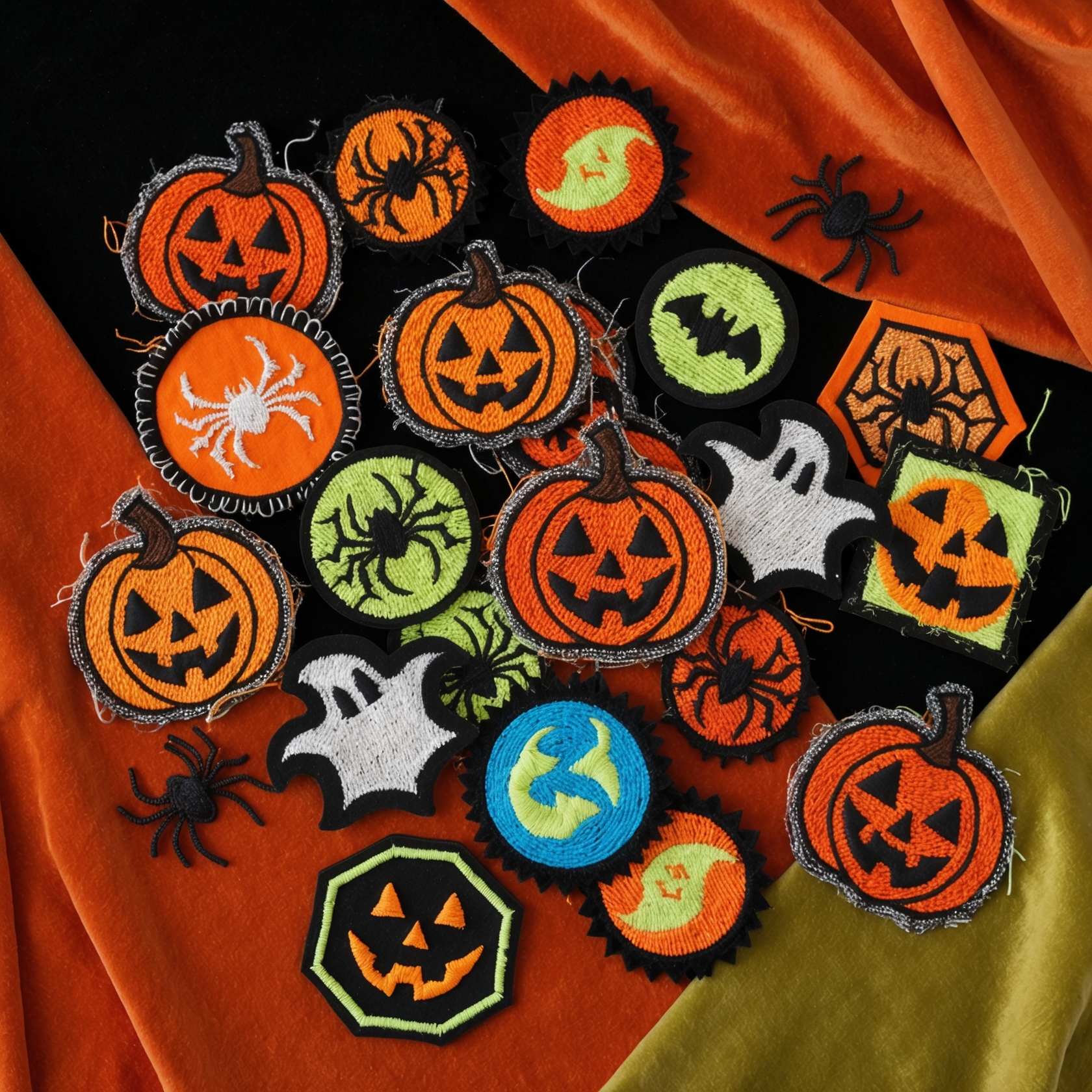Imagine a firefighter, a soldier, or an avid hiker. They all wear uniforms or gear adorned with patches. These patches endure harsh environments, extreme weather, and constant wear and tear. The secret behind their longevity? The materials they’re made from. Choosing the right material for your patches can mean the difference between a patch that lasts and one that fades or frays quickly. So, what are the best materials for durable patches, and why do they matter? Let’s unravel the mystery behind durable patches, exploring the top materials from cotton to PVC.
Durable patches are essential for various applications, from military and emergency services to outdoor activities and fashion. The right material ensures that patches withstand the rigors of their intended use while maintaining their appearance and integrity. This article delves into the best materials for durable patches, addresses common misconceptions, and provides practical insights to help you choose the perfect material for your patches.
The Importance of Durable Patches
1. Longevity and Performance
Why Durability Matters:
Durable patches are crucial because they need to withstand various environmental factors and physical stress. Whether on a military uniform, a firefighter’s gear, or a hiking backpack, patches should remain intact and legible over time.
- Example: A military patch needs to endure the harsh conditions of combat zones, including exposure to dirt, water, and extreme temperatures. A durable patch ensures that the emblem remains visible and intact, maintaining the soldier’s identity and unit pride.
Some may argue that all patches are inherently durable and that the material choice doesn’t significantly impact longevity.
Solution:
While all patches aim to be durable, the material used greatly influences their resilience. Different materials offer varying levels of resistance to wear, tear, and environmental factors. Understanding these differences is key to choosing the right material for specific needs.
Top Materials for Durable Patches
1. Cotton Twill
Classic and Reliable:
Cotton twill is a popular material for patches, known for its durability and classic appearance. It is a tightly woven fabric that offers a sturdy base for embroidery.
- Example: Many traditional scouting patches are made from cotton twill, providing a durable and aesthetically pleasing option that withstands outdoor activities.
Concerns about cotton twill patches being less resistant to water and staining.
Solution:
While cotton twill is not inherently water-resistant, applying a protective coating can enhance its durability against moisture and stains. This simple addition can extend the life of cotton twill patches significantly.
2. Polyester
Versatile and Resilient:
Polyester is another common material for durable patches. It is highly resistant to abrasion, moisture, and UV rays, making it ideal for various applications, including outdoor and tactical gear.
- Example: Polyester patches are often used in sports uniforms and outdoor gear due to their durability and resistance to harsh conditions.
Some might argue that polyester patches lack the traditional look and feel of cotton.
Solution:
Polyester patches can be designed to mimic the appearance of traditional materials while offering superior durability. Advances in textile technology allow for high-quality, aesthetically pleasing polyester patches.
3. PVC (Polyvinyl Chloride)
Modern and Ultra-Durable:
PVC patches are gaining popularity due to their incredible durability and versatility. They are made from a flexible plastic material that is waterproof, weather-resistant, and highly resilient to wear and tear.
- Example: Many tactical and military units prefer PVC patches for their ruggedness and ability to maintain vibrant colors and intricate designs in harsh environments.
Concerns about the environmental impact of PVC.
Solution:
While PVC is a type of plastic, many manufacturers are developing more eco-friendly PVC options and recycling programs to mitigate environmental concerns. Choosing suppliers who prioritize sustainability can address these issues.
4. Leather
Elegant and Long-Lasting:
Leather patches offer a unique blend of durability and sophistication. They are highly resistant to wear and aging, making them a popular choice for fashion and high-end applications.
- Example: Leather patches on denim jackets or high-quality backpacks provide a durable and stylish option that can withstand daily use while adding a touch of elegance.
Concerns about leather being too delicate or high-maintenance for some applications.
Solution:
Properly treated leather is highly durable and requires minimal maintenance. Waterproofing treatments and regular conditioning can ensure leather patches remain in excellent condition for years.
Practical Tips for Choosing the Right Material
1. Consider the Application
Tailoring Material to Use:
The best material for a patch depends on its intended use. Consider the environment and conditions the patch will be exposed to when selecting the material.
- Example: For outdoor gear exposed to rain and sunlight, PVC or polyester patches are ideal due to their weather resistance. For fashion items, leather or cotton twill may be preferred for their aesthetic appeal.
Concerns about balancing durability with appearance.
Solution:
Modern materials can be customized to balance durability and aesthetics. Discussing specific needs with a knowledgeable supplier can help find the perfect material that meets all requirements.
2. Evaluate the Design
Matching Design with Material:
Different materials offer varying levels of detail and texture for patch designs. Choose a material that complements the design and enhances its visual impact.
- Example: Intricate embroidered designs are well-suited to cotton twill, while bold, raised designs look great on PVC patches.
Concerns that some designs may not translate well onto certain materials.
Solution:
Working with experienced designers and manufacturers can ensure that designs are adapted to suit the chosen material, maintaining their integrity and visual appeal.
Exploring Future Trends
Innovations in Patch Materials:
Stay ahead by exploring future trends in patch materials, such as eco-friendly options and advanced synthetic materials. These innovations can offer enhanced durability and sustainability.
- Example: Biodegradable patches made from sustainable materials are becoming more popular, providing an eco-friendly alternative without sacrificing durability.
Conclusion
Choosing the best material for durable patches involves understanding the unique properties and benefits of each option. From the classic reliability of cotton twill to the modern resilience of PVC, each material offers distinct advantages that cater to different needs and applications. By considering factors such as application, design, and sustainability, you can select the perfect material for your patches, ensuring they withstand the test of time while looking fantastic. Embrace the artistry of patch-making and let your designs shine with the best materials available.
By exploring the best materials for durable patches, you can create designs that not only stand the test of time but also make a lasting impression. Whether for fashion, function, or both, the right material can elevate your patches to new heights of durability and style.
If you are interested in ordering some high-quality custom patches, feel free to call us at 877-912-6407 or fill out a FREE quote here.




